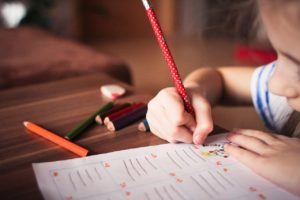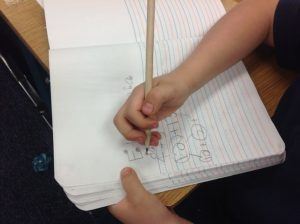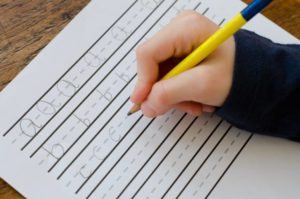Tips & Tricks
Holidays are a fun and exciting time of the year. Holidays can also be a stressful time of the year for both children and their parents. Children with deficits with sensory processing may have more difficulty with maintaining appropriate modulation which may lead to being overwhelmed and having more melt-downs. Keeping in mind the following strategies can help families get though the holiday season with less frustration.
· Put up Holiday decorations slowly over time. Allow your child to be part of the process of decorating so that she does not get overwhelmed with the lights, sounds, or changes in furniture set up.
· If you take your child shopping with you, try to avoid shopping at crowded or busy times. Shopping ahead of time or online might be appropriate alternatives.
· Educate extended family members about your child’s difficulties with sensory processing and let them know if there are any changes and adaptations that you will be making to traditional Holiday get togethers.
· When going to outings that may be overwhelming take your child’s comfort items and familiar toys for him to play with.
· Let your child know ahead of time what activities are scheduled. Let them know what the activity is, when it will take place, and what to expect. If possible, it may be beneficial to create a social story with pictures from previous years if possible to share with your child before an event.
· Try to stay on your normal routine: Try to be consistent with wake-up times, nap times, meal times, and bed times. Try to keep the same bedtime routine allowing time for your child to calm down before bed.

· Allow for extra rest and nap times if needed. Schedule in times for your child to have down time from scheduled activities in a quieter place.
· When going to family meals: allow for your child to eat at their typical meal time. Bring food that your child will usually eat and allow them to eat the familiar foods.
· When going to relatives/friends’ houses for get togethers it may be helpful to talk to the host a head of time to see if there is a separate place for your child to go to calm down if needed or to warm up to transition to environment.
· Dress your child in comfortable and familiar clothes. Allow the child to wear his favorite pants with a Holiday shirt, looks for clothes in the same fabric that they are used to wearing. For Holiday outfits, allow the child to wear the outfits before a holiday gathering.
· Be flexible on your expectations for traditional holiday activities. Allow for your child to stand near Santa or give him a high-5 instead of having your child sit on Santa’s lap for a photo. Let a child open only one or two gifts at a get-together and take the remaining gifts home to open at a later time.
Check out our video: Preparing your sensory child for a Holiday – YouTube
Staying flexible and making small adaptations can help you and your child have a more enjoyable Holiday season. For more information about sensory processing and development milestones please visit our website at: www.abcpediatrictherapy.com
Read MoreAfter reading Prewriting Tips to Grow On and working on these skills with your child, you should be on the right track to begin handwriting letters and numbers with your child.
1. By 5, your child should begin writing numbers 1-5 and capital letters of his/her first name.
At first, give your child opportunities to trace the capital letters of his/her first name. Once they have mastered this and stay on the lines, they are able to begin writing the letters with a visual model. Focus on learning the appropriate formation of each letter, beginning all letters at the top rather than the bottom. Learning how to form letters correctly from the beginning helps them succeed later. Once your child’s formation of letters is appropriate, work on writing letters independently, without a visual model. When your child learns to write his/her name, s/he is ready to learn the rest of the alphabet.
2. By 5.5, your child should be able to write numbers 1-10 and all capital letters.
Start with capital letters A-M. Begin tracing, then writing with a visual model, and move onto writing independently. Then focus on N-Z following the same sequence. Lastly, put it all together, writing letters A-Z independently.
3. By around 6.5, your child should be able to write all lower case letters.
Follow the same sequence with lower case letters as you did with upper case letters. Lower case letters can also be divided into 3 different categories (tall, diver, and other letters) to teach.
Tall letters: b, d, f, h, k, l, t
Diver letters: g, j, p, q, y
If your child is having difficulty with letter formation, try making starting dots so your child knows where to begin each letter. Also writing in different mediums such as finger paint, sand, shaving cream, playdoh, chalk, and dry erase markers can help children learn how to form letters. Writing in different tactile mediums has been proven to help children learn to write.
After your child has mastered forming capital and lower case letters, it is now time to work on line alignment and sizing. Using horizontal three lined paper (ADD picture) with bold/colored top and bottom lines can assist with line alignment and sizing. Additionally, highlighting these boarders can help. Highlighting the space below the dotted line can help with alignment of lower case letters.
It is now time to move onto writing words and sentences. Make sure letters stay formed and aligned correctly when completing these tasks; sometimes when children begin to write words their formation and alignment decrease. You will now also have to focus on spacing letters within words and spacing between words. The best way to space between words is to use your child’s finger as a space marker.
Again, if you are having concerns or if you child is not progressing like you think s/he should, please do not hesitate to contact ABC Pediatric Therapy and specifically ask for an occupational therapist for more ideas geared towards your specific needs and if you have any additional questions or would like a free screening. Visit our website at www.abcpediatrictherapy.com to find the location nearest you.
Read More Skip to content
Skip to content

